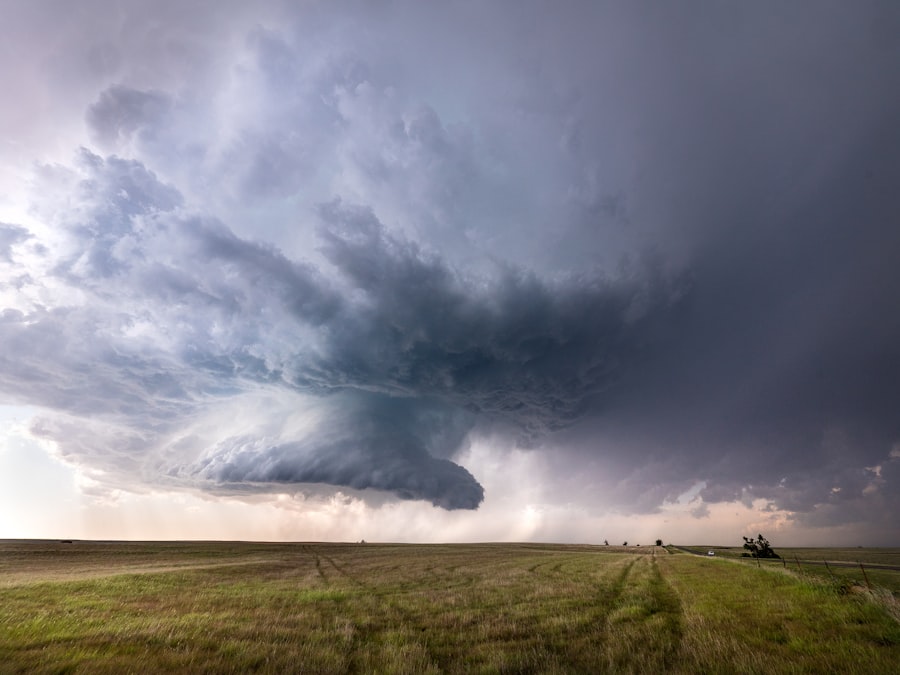The El Reno tornado, which struck on May 31, 2013, is one of the most powerful tornadoes ever recorded in the United States. With winds exceeding 300 miles per hour, it was classified as an EF5 tornado, the highest rating on the Enhanced Fujita scale. This catastrophic event not only devastated the town of El Reno, Oklahoma, but also left a lasting impact on the surrounding communities.
The tornado’s path was unusually wide, measuring over two and a half miles at its peak, which contributed to its extensive destruction. Homes were obliterated, businesses were flattened, and lives were irrevocably changed in mere moments. Understanding the dynamics of such a powerful tornado is crucial for both residents and meteorologists alike.
The El Reno tornado was part of a larger severe weather outbreak that affected several states in the central United States. It formed under specific atmospheric conditions characterized by warm, moist air colliding with cooler, drier air, creating an environment ripe for severe thunderstorms and tornado formation. The sheer ferocity of this tornado serves as a stark reminder of nature’s unpredictability and the importance of preparedness in the face of such disasters.
Creating a Survival Plan
Identifying Safe Locations
A well-thought-out plan can mean the difference between life and death during severe weather events. The first step in crafting a survival plan is to identify safe locations within the home where family members can take shelter during a tornado. Basements or interior rooms on the lowest floor, away from windows, are typically the safest options.
Preparing an Emergency Kit
In addition to identifying safe spaces, individuals should prepare an emergency kit that includes essential supplies such as water, non-perishable food, flashlights, batteries, a first-aid kit, and important documents. This kit should be easily accessible and regularly updated to ensure that all items are in good condition and not expired.
Practicing Tornado Drills
Furthermore, practicing tornado drills with family members can help everyone become familiar with the plan and reduce panic during an actual emergency. By taking these proactive steps, individuals can significantly enhance their chances of staying safe during a tornado.
Finding Shelter

When a tornado warning is issued, finding shelter quickly becomes a top priority. The urgency of this task cannot be overstated, as every second counts when facing such a formidable natural disaster. For those who live in homes without basements or designated storm shelters, it is crucial to identify alternative locations that can provide adequate protection.
Interior rooms on the lowest floor, such as bathrooms or closets, can serve as makeshift shelters if no basement is available. It is important to avoid windows and exterior walls, as these areas are more susceptible to flying debris. In addition to personal residences, community resources such as local schools or community centers often serve as designated storm shelters during severe weather events.
These facilities are typically equipped to handle large groups of people and may offer additional resources such as food and medical assistance. Knowing the location of these shelters ahead of time can save valuable minutes during an emergency. Moreover, individuals should consider reaching out to neighbors or friends who may have more secure shelter options available.
Building a network of support within the community can enhance overall safety during tornado season.
Staying Informed
| Source | Frequency | Accuracy |
|---|---|---|
| Newspapers | Daily | High |
| TV News | Several times a day | Medium |
| Online News Websites | Continuous | Varies |
Staying informed about weather conditions is vital for anyone living in areas prone to tornadoes. The ability to receive timely updates can significantly impact preparedness and response efforts during severe weather events. Various resources are available for individuals to stay informed, including local news broadcasts, weather apps, and NOAA Weather Radio.
These platforms provide real-time alerts about severe weather warnings and updates on changing conditions. In addition to traditional media sources, social media has emerged as a powerful tool for disseminating information during emergencies. Many local meteorologists and emergency management agencies utilize platforms like Twitter and Facebook to provide immediate updates and safety tips.
Engaging with these resources can help individuals stay ahead of potential threats and make informed decisions about their safety. Furthermore, it is essential for families to establish a communication plan that includes how they will stay in touch during severe weather events when traditional communication methods may be disrupted.
After the Storm: Assessing Damage
Once the storm has passed, assessing damage becomes a critical next step for residents affected by a tornado. The aftermath of such a powerful event can be overwhelming, with destruction often visible as far as the eye can see. Individuals should approach this process with caution; downed power lines and unstable structures pose significant risks.
It is advisable to wait for official clearance from local authorities before entering damaged areas to ensure personal safety. During the assessment phase, documenting damage through photographs and written notes can be beneficial for insurance claims and recovery efforts. Homeowners should take inventory of damaged property and belongings while also keeping receipts for any repairs or temporary housing expenses incurred after the storm.
Understanding the extent of damage not only aids in recovery but also helps communities come together to support one another during this challenging time.
Seeking Help and Support

In the wake of a devastating tornado like the one that struck El Reno, seeking help and support becomes paramount for those affected by the disaster. The emotional toll of such an event can be just as significant as the physical damage inflicted on homes and communities.
It is essential for survivors to recognize that they are not alone and that support is available. Local organizations, churches, and community groups often mobilize quickly after a disaster to provide assistance to those in need. This support may come in various forms, including food distribution, temporary housing solutions, or financial aid for rebuilding efforts.
Additionally, mental health resources are crucial for helping individuals cope with trauma and loss. Counseling services or support groups can provide safe spaces for survivors to share their experiences and feelings while receiving guidance from trained professionals. Reaching out for help is a vital step toward healing and rebuilding after such a catastrophic event.
Coping with Trauma
Coping with trauma after experiencing a tornado can be an arduous journey for many individuals and families. The psychological impact of witnessing destruction or losing loved ones can linger long after the physical damage has been repaired. Survivors may experience symptoms of post-traumatic stress disorder (PTSD), including flashbacks, anxiety attacks, or difficulty sleeping.
Recognizing these symptoms is crucial for seeking appropriate help and support. Engaging in self-care practices can also play a significant role in coping with trauma. Activities such as journaling, meditation, or spending time in nature can provide individuals with outlets for processing their emotions and experiences.
Additionally, maintaining connections with friends and family can foster a sense of community and belonging during difficult times. Support networks are invaluable for sharing feelings and experiences while reminding survivors that they are not alone in their struggles.
Rebuilding and Moving Forward
Rebuilding after a tornado is not just about repairing physical structures; it also involves restoring hope and resilience within communities. The process can be lengthy and challenging but offers opportunities for growth and renewal. As individuals begin to rebuild their homes and lives, they often find strength in their shared experiences with neighbors and friends who have faced similar challenges.
Community involvement plays a crucial role in this rebuilding process. Local organizations often spearhead initiatives aimed at helping residents recover from disasters through volunteer efforts or fundraising campaigns. These collective actions foster a sense of unity among residents as they work together toward common goals—rebuilding homes, restoring businesses, and revitalizing neighborhoods.
As communities come together to support one another during this time of recovery, they often emerge stronger than before, equipped with newfound resilience and determination to face future challenges head-on. In conclusion, understanding the complexities surrounding tornadoes like the El Reno tornado is essential for effective preparedness and recovery efforts. By creating survival plans, finding appropriate shelter, staying informed about weather conditions, assessing damage post-storm, seeking help when needed, coping with trauma effectively, and engaging in community rebuilding efforts, individuals can navigate the aftermath of such disasters with greater resilience and hope for the future.
If you are interested in learning more about storm chasing equipment and safety tips, be sure to check out this article on Tornado Extreme’s website. It provides valuable information for those looking to chase tornadoes like the one that hit El Reno.

